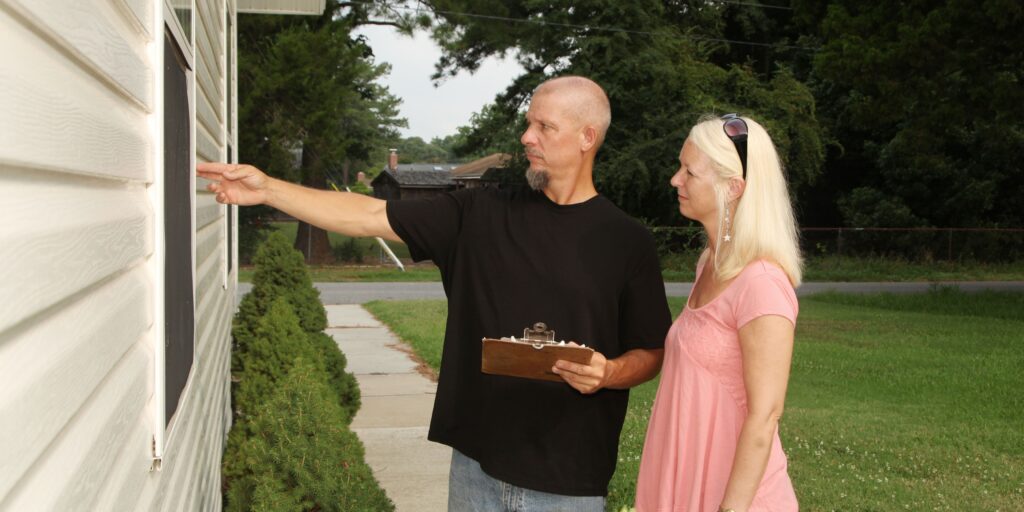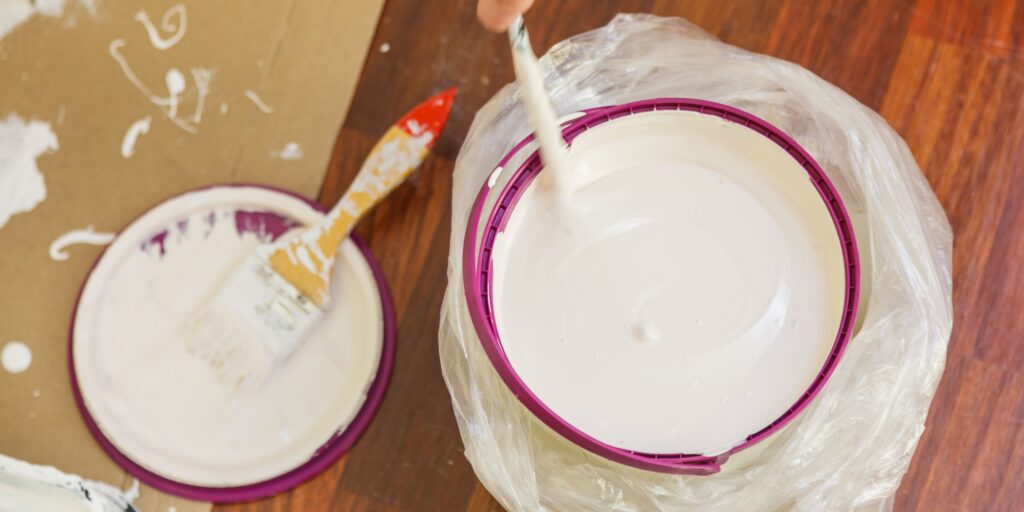A great painting job is one that is done on time, with good quality paint and materials, doesn’t look rushed, and leaves your home free of paint fumes and debris. It should be done with an eye to detail and focusing on the job at hand. If you’ve just had your home painted and want to know if your painter did a good job. Here are some things to look for.
Check the Trim and Molding to See if Any Paint Is Dripping or Uneven
Before finalizing everything, make sure that you check every nook and cranny to see if there are any streaks or missed spots. Next, inspect the corners and edges to see if the paint is clean and smooth. If there are visible brush strokes or roller marks, the paint wasn’t applied evenly.
This can also signify that the painter rushed and left your home free of paint fumes and debris. If you notice anything out of the ordinary, it’s a good idea to call your painter and ask them to come back and fix it.

Check Your Contract
Contracts are essential in any business relationship, and house painting is not exempted. Ensure that everything is followed according to what you have signed up for before letting go of your painting contractor.
This includes your start date, the estimated completion date, the total price, materials used, a description of the work to be done, payment terms, insurance information, and a cancellation clause that allows you to terminate the contract if the work is not completed or if there are significant delays and problems.
Ask to See a Dry Rag
A dry rag is a good, quick way to tell if a painter has done a good job or not. If a painter has primed and painted correctly, you should be able to touch the freshly painted surface with a dry rag without leaving any paint on it. The last things you want to see on your freshly painted walls are paint drips or streaks. Cleaning the walls is easy, but it’s a lot harder to get those stains off the walls if the painter doesn’t do a thorough job cleaning up his mess.

The Ceiling Should Be Smooth and Even
If the ceiling has been textured and painted, it should be smooth and even. If the paint’s surface is bumpy or bubbly, the painter did a lousy job and may have caused damage to your ceiling. Don’t forget to check the edges of the freshly painted surface as well; if they should be neat and free of paint drips.
Cost and Expenses of House Exterior Painting
Inspect the Exteriors
When you’re inspecting the painting exterior of your home, pay close attention to the trim and gutters. These are two places where paint drips are most likely to occur. If the trim has been painted, there should be no paint on the glass or on the ground below. The gutters should also be free of any loose paint chips or flakes.
Check for Overspray Paint on Windows, Door Frames, and Baseboards
If the painter didn’t cover adjacent surfaces with drop cloths, they might have overspray paint onto those objects. Check for overspray paint on the windows, window blinds headrails, doorframes, and baseboards. You should be able to hold a white rag against any of those surfaces and see nothing but a clean, white one. If the rag is covered with paint, the painter didn’t do a good job.
Ask For (And Check) A Receipt for Materials Used
A good painting contractor will provide you with a receipt for the materials used. If you suspect that the painter used low-quality, cheap materials, you have the right to reject the work because it wasn’t done to your satisfaction.
In addition, you have the right to require that they repaint the areas with better materials and ask them to rework other aspects of the project that you don’t think are acceptable—for example, poor prep work or poor paint application.

Inspect before Giving the Check
Painters often want to get paid when they’ve finished the job. However, it’s best to hold on to the payment until you’re certain the work is completely done and pleased with the overall result. Make it a point to have your own copy or record of what was done, how long it took, and how much he was paid. Then, of course, if you have any doubts, have the painter come back and finish the job to your satisfaction.
These are just a few things to look for when evaluating your painter’s work. By doing a thorough inspection, you can be sure that you’re getting what you paid for and that your home is in good hands. If you have any questions or concerns, don’t hesitate to reach out to your painter or ask for clarification.

What Is Considered a Bad Paint Job?
A bad paint job can be anything from a poorly executed color scheme, to a sloppy application, to missed details. It’s essential to be aware of the warning signs so that you can catch the problem early on and get it corrected before it becomes too noticeable.
Here are five signs that your painter may have botched your job:
1. Poor coverage: If your painter doesn’t cover the entire wall or ceiling surface with paint, it’s likely because they didn’t use enough paint. This could lead to unsightly blemishes or areas that are not adequately covered.
2. Poor color consistency: If your colors are inconsistent from one part of the room to another, it’s likely that your painter didn’t use enough paint or mixed the colors incorrectly. This can lead to a jarring appearance and an overall unsatisfied customer.
3. Poor texture: If your walls or ceilings have rough patches or textures, it’s likely that your painter didn’t use enough sandpaper when they were painting. This can lead to unsightly blemishes and uneven coverage.
4. Unpainted areas: If you notice any areas on your walls or ceilings where paint has been left unfinished, this is a sign that your painter may not have been up to standard. This can lead to unsightly blemishes and a less than perfect finish.
5. Unnoticeable drips: If there are noticeable drops of paint on the floor or on other surfaces nearby, this is a sign that your painter wasn’t careful enough. Paint drips are not only unsightly, but they can also be dangerous. If someone steps on a paint drip, it could cause them to slip and fall. A good painter will take the time to cover all surfaces nearby with drop cloths to avoid any accidents.
Paint drips are also a sign that your painter didn’t properly prepare the surface before painting. If the paint drips, the paint isn’t applied evenly and smoothly. A good painter will take the time to sand down the surface and apply a primer before painting so that the paint will go on smoothly and evenly. If you see any paint drips, be sure to point them out to your painter so they can fix the problem.

Why Do Painters Add Water to Paint? Is It Good to Water Down Paint?
Water is often added to paint to make it more fluid. This is usually done to help the paint spread evenly and reduce the chance of brushstrokes appearing too thick or lumpy. It’s also common to water down paint to reduce the chance of cracking or peeling. However, always be sure to use a paint thinner when applying water because too much will cause the paint to become too thin and rub off easily.
Does Thinning Paint With Water Change the Color?
Adding water to paint can change the color depending on the paint type, and the amount of water added. Thinner paints will become more fluid and may change color depending on the dilution. Paint that is too thin will also be more likely to crack or peel. Always use thinner paint when thinning paint to avoid these problems.
Custom Colonial Painting in Connecticut takes pride in its work and wants to ensure that its customers are happy with the final product. So, if you are within or near the Connecticut area, don’t forget to get a free estimate!

